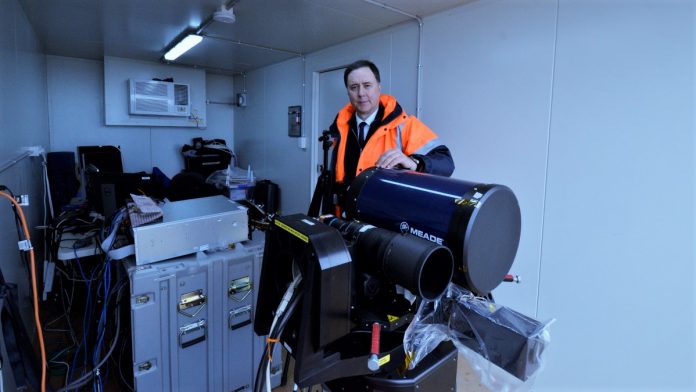
The Department of Defence unveiled its most innovative camera surveillance project yet, a ‘revolutionary’ sensor that can detect extremely faint objects – even an individual photon of light.
Capable of detecting small uninhabited aerial vehicles or missiles flying above the surface of the ocean, the single-photon avalanche diode (SPAD) can help navies overcome the challenge of detecting small targets amid ocean noise.
Because of its extremely sensitive nature, the SPAD can detect individual particles such as single photons of light. It can also build up 3D images under low-light or obscured conditions – making it suitable for use both in military and civilian purposes.
“With a normal camera, like your phone’s camera, those sorts of sensors rely on using lots of photons to form an image; in fact, they need millions of photons,” said Dr Dennis Delic, who leads the design, development and commercialisation of SPADs within Defence.
“With this miniature smart sensor technology we’re operating at the fundamental limit, detecting individual photons and registering each particle. Using advanced processing we can count them and time them, and that opens up all sorts of opportunities in terms of what we can do.”
The SPAD’s ability to function at low energy levels makes it a viable option in active sensor systems – systems whose energy emissions can be detected by another party.
Integrating the SPAD in the LiDAR system, which measures distances by illuminating objects with a laser and then deflecting the reflected energy, will reduce the risk of being targeted or caught should the sensor be used.
SPADs also have potential applications in wearable augmented reality vehicle sensors, autonomous vehicle navigation systems, advanced medical imaging capabilities, and more.
According to Dr Delic, the Defence is taking an innovative design approach to allow cost-manufacturing at scale of the sensors.
“Combined with new integrated circuit design techniques, this represents the next revolution in quantum imaging, allowing us to see things that are normally hidden from view,” said Dr Delic.
“Through partnering with academia, industry and the Australian Defence Force, the adoption of SPAD sensor technology is the key to enhancing advanced demonstrator programs.”




















